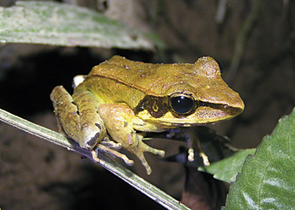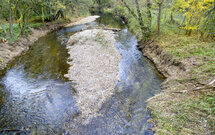Nature Conservation 6/2009 — 16. 12. 2009 — International Nature Conservation — Print article in pdf
Globální úbytek obojživelníků II.
dokončení z minulého čísla

With respect to decline in numbers and risk that the whole species become extinct, amphibians probably is the most threatened vertebrate group at present. By this time 34 amphibian species are reported to have become extinct, mainly frogs.
Among them, the unique family of gastric-brooding frogs or Platypus frogs (Rheobatrachidae) which were able to rear tadpoles in their stomach should be mentioned. Amphibian extinction and decline is a worldwide problem affecting species in both developing and developed countries. There are many drivers causing the mass amphibian decline worldwide and they might amplify each others effect. Some of the causes of amphibian decline are similar to those for other organisms, while others are specific for amphibians. Among them, habitat fragmentation. destruction and loss is the most serious. Others include invasive alien species, hunting and collecting for human food, road traffic, the current and projected climate changes and by the disease chytridiomycosis caused by the chytrid fungus Batrachochytrium dendrobatidis. Decline in amphibian numbers can also be caused by environmental pollutants (humane hormones from birth control) or abandoning some landscape management practices. Many amphibian species have been protected, but only formal legislative protection is not effective. Therefore, a special attention should be paid to natural and semi-natural habitat conservation, management and restoration.
Název připojené galerie
Quisque egestas velit non nulla fermentum, aliquet pharetra nunc malesuada. Nullam molestie vel diam non tincidunt. Sed pulvinar lacinia nunc et consectetur. Duis varius leo ac ex scelerisque, ullamcorper eleifend massa consectetur. Nullam in metus ac arcu pellentesque venenatis ac id lorem. Nulla nec ipsum sed enim sodales blandit a sit amet ex.









